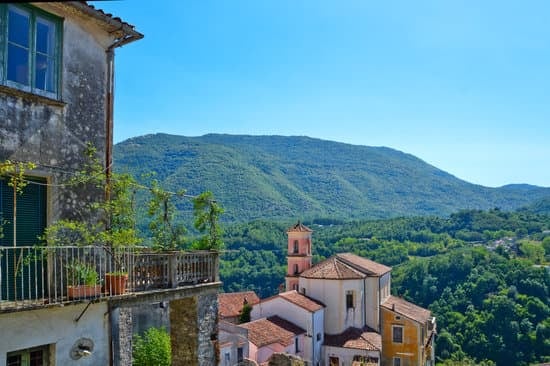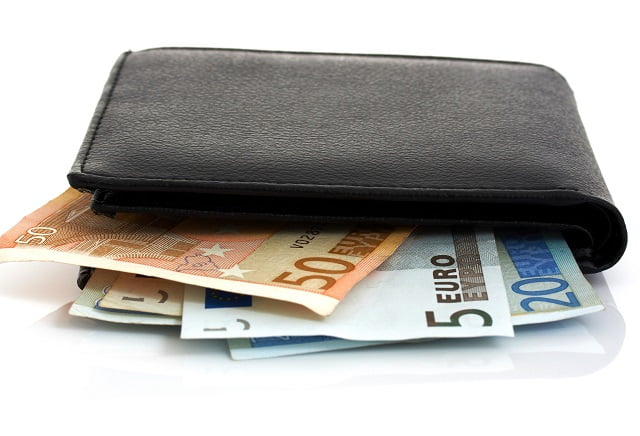Italy is a dream destination for many travelers, known for its exquisite beauty, rich culture, and historical significance. However, to make the most of your trip to Italy, effective money management is crucial.
In this article, we will explore various tips and strategies to help you navigate the financial aspects of your journey. From planning a budget and managing currency exchange to finding affordable accommodation and experiencing authentic Italian cuisine without breaking the bank, this guide will provide valuable insights and recommendations to ensure that your money goes a long way while traveling in Italy.
Italy’s allure lies in its diverse landscapes, iconic landmarks, and vibrant cities steeped in history. The country is home to countless UNESCO World Heritage sites such as the Colosseum in Rome, the canals of Venice, and the ancient city of Pompeii.
As dreamy as it may sound, it’s essential to approach your trip with careful financial planning. By setting realistic financial goals for your journey through Italy, you can fully immerse yourself in its beauty while keeping within your budget.
Understanding the local currency is vital for any traveler visiting Italy. The official currency is the Euro (€), which means that being familiar with current exchange rates and choosing where to exchange money are crucial steps to maximize your funds. This article will guide you on how to handle currency exchange efficiently while also providing tips on avoiding scams and ensuring the safety of your money.
Accommodation can often be one of the most significant expenses during a trip abroad. Fortunately, Italy offers a range of affordable options that allow travelers to experience authentic stays without breaking the bank. From budget hotels and hostels to vacation rentals tucked away in lesser-known regions, there are numerous ways to find affordable yet memorable places to stay throughout the country. This section will provide strategies for booking accommodations at ideal locations within your budget.
Planning a Budget
When it comes to traveling to Italy, it’s important to plan your budget effectively to ensure a memorable and stress-free trip. Setting realistic financial goals will not only help you avoid overspending but also allow you to make the most of your money while experiencing all that Italy has to offer. Here are some tips on how to plan a budget for your trip to Italy.
Firstly, creating a comprehensive travel budget is essential. Start by estimating the costs for accommodation, food, transportation, and activities. Researching the average prices in each category will give you a good idea of how much you can expect to spend during your trip. It’s important to be realistic about your spending habits and calculate any additional expenses such as souvenirs or unexpected fees.
To help with tracking expenses and sticking within your budget, there are several useful budgeting tools and apps available. These tools allow you to input your estimated costs and track your actual spending throughout your trip. Some popular options include Mint, You Need a Budget (YNAB), and Trail Wallet.
In addition to these tools, consider keeping a daily spending diary or using spreadsheets to record all expenditures. This will give you a clear picture of where your money is going and help identify any areas where you may need to cut back.
| Category | Average Daily Cost |
|---|---|
| Accommodation | $100 – $200 |
| Food | $30 – $50 |
| Transportation | $20 – $50 |
| Activities | $20 – $50 |
| Additional Expenses | $10 – $30 |
By setting realistic financial goals and planning your budget carefully, you can ensure a worry-free trip to Italy. Remember, it’s always better to have a little extra money set aside for unexpected expenses, but with proper planning, you can make the most of your trip without breaking the bank.
Currency Exchange
The Local Currency: Euro and Its Exchange Rate
When traveling to Italy, it’s important to familiarize yourself with the local currency and its current exchange rate. The official currency in Italy is the Euro (€), which is widely accepted throughout the country. It’s recommended to check the current exchange rate before your trip to have an idea of how much your money is worth in Euros. Keep in mind that exchange rates may fluctuate, so it’s a good idea to monitor them before exchanging your money.
Where to Exchange Money Without Excessive Fees
To maximize your money while exchanging currency, it’s advisable to avoid exchanging money at airports or hotels as they often charge higher fees and unfavorable rates. Instead, look for reputable currency exchange bureaus or banks located within city centers or popular tourist areas.
These establishments tend to offer better rates and lower fees compared to airport exchanges. Additionally, withdrawing cash from ATMs using your debit card can be a convenient option, as long as you are aware of any foreign transaction fees imposed by your bank.
Ensuring the Safety of Your Money and Avoiding Scams
While traveling, it’s crucial to take necessary precautions to ensure the safety of your money. Be cautious when using ATMs and always cover your PIN number while entering it. It’s also advisable to divide your cash into different pockets or bags instead of carrying it all in one place. For added security, consider using a travel wallet or hidden pouch that you can wear under clothing.
Another common scam to watch out for is counterfeit currency. Familiarizing yourself with common security features of the Euro notes can help you detect any counterfeits. If someone tries to give you suspicious-looking notes as change, politely decline and ask for different bills.
By being aware of these currency exchange tips and pitfalls, you can make sure that you receive fair value for your money and safeguard yourself from potential scams while enjoying your trip to Italy.
Saving on Accommodation
When planning a trip to Italy, one of the major expenses to consider is accommodation. Fortunately, there are numerous affordable and authentic places to stay that will provide a comfortable and memorable experience. By exploring different options and utilizing some effective strategies, travelers can save money on accommodations without compromising on quality.
Exploring Different Accommodation Options
Italy offers a wide range of accommodation options to suit every budget. Budget hotels, hostels, and vacation rentals are among the popular choices for travelers looking for affordable stays. Budget hotels often offer comfortable rooms at reasonable rates, while hostels provide a social aspect and are ideal for solo travelers or those on a tight budget. Vacation rentals are another cost-effective option for families or groups as they allow for self-catering and can provide more space.
Considering Lesser-Known Cities and Regions
While cities like Rome, Florence, and Venice may be popular tourist destinations in Italy, they also tend to have higher accommodation costs. Travelers looking to save on accommodation should consider exploring lesser-known cities and regions.
Places like Bologna, Perugia, or Puglia offer authentic experiences with lower prices compared to their more touristy counterparts. Additionally, rural areas outside of major cities often have charming bed and breakfasts or agriturismos (farm stays), which offer an immersive experience at a fraction of the cost.
Utilizing Strategies for Booking Affordable Stays
To find the best deals on accommodations in Italy, it’s important to utilize some smart booking strategies. First, booking well in advance can often result in significant savings on hotel rates or vacation rentals. It’s also worth considering flexible dates as prices can vary depending on the time of year.
Another strategy is to use comparison websites or apps that aggregate multiple booking platforms to ensure you are getting the best price possible. Lastly, reaching out directly to small independently-owned accommodations can sometimes result in negotiated discounts, especially during off-peak seasons.
By considering different accommodation options, exploring lesser-known cities and regions, and utilizing smart booking strategies, travelers can save money on accommodations while still experiencing the authentic charm of Italy. Remember that while saving money is important, it’s also essential to choose accommodations that meet your comfort and safety standards. With a little research and planning ahead, finding affordable places to stay in Italy can be an exciting part of the travel experience.
Eating on a Budget
Italy is renowned for its delectable cuisine, and experiencing authentic Italian food is often at the top of travelers’ to-do lists. However, dining out can quickly become a significant expense during a trip. In this section, we will provide you with practical tips and recommendations on how to enjoy delicious Italian food without breaking the bank.
One of the best ways to save money on meals in Italy is by exploring local markets and trying out street food. Italian markets are not only a vibrant hub of activity but also offer an array of fresh produce, cheese, meats, and other culinary delights at affordable prices. You can sample different ingredients and even purchase items for a picnic or simple meal preparation at your accommodation.
Another budget-friendly option is to seek out small, family-run trattorias and osterias that provide authentic Italian dishes at reasonable prices. These establishments often offer set menus or “menu del giorno” (daily specials) that include multiple courses for a fixed price. This way, you can try traditional regional dishes without spending too much.
Furthermore, indulging in regional specialties can be a great way to experience the local culture without overspending. Each region in Italy has its own distinct dishes and flavors, whether it’s Neapolitan pizzas, Florentine steaks, or Sicilian cannoli. By focusing on the specialties of the area you’re visiting, you’ll not only save money but also get an authentic taste of Italy.
| Tips to Enjoying Authentic Italian Food on a Budget: |
|---|
| Explore local markets for affordable fresh produce |
| Try street food for quick bites and local specialties |
| Seek out family-run trattorias and osterias for affordable traditional dishes |
| Focus on regional specialties to get the most authentic experience |
| Avoid eating near tourist hotspots, as prices are often inflated |
By following these tips, you can savor a wide range of delicious Italian food without putting a strain on your budget. Remember, experiencing Italy’s culinary delights should be a part of your trip, but it doesn’t have to break the bank.
Transportation
Italy has a well-established transportation system that makes traveling between cities and regions relatively easy. To navigate Italy’s transportation system smartly and save money, it is important to familiarize yourself with the different options available and plan your journeys in advance.
- Trains: Italy’s train network is extensive and efficient, making it one of the most popular modes of transportation for tourists. It is advisable to book train tickets in advance to secure the best prices, especially for long-distance journeys.
Websites like Trenitalia and Italo offer convenient online booking platforms where you can compare schedules and fares. Additionally, consider purchasing regional passes or discount cards such as the Eurail Italy Pass or ItaliaRail Pass if you plan on taking multiple train trips during your stay. - Buses: Buses are another cost-effective option for traveling within Italy, particularly for shorter distances or when visiting smaller towns that may not be reachable by train. Companies like FlixBus and Baltour operate extensive bus networks connecting various cities across the country. Booking bus tickets online in advance can often result in significant savings, so be sure to check the websites of these bus operators to find the best deals.
- Rental Cars: Renting a car in Italy can provide more flexibility and convenience, especially if you plan on exploring remote areas or rural regions. However, it is essential to consider factors such as parking availability, traffic regulations, and toll charges before opting for this mode of transportation. To save money on car rentals, compare prices from different rental agencies and book well in advance to secure competitive rates.
- Local Transportation: Once you arrive at your destination city in Italy, using local transportation methods like trams, buses, and metros can be an affordable way to get around town. Many cities offer discounted day passes or travel cards that allow unlimited travel within a specified period. Researching local transport options beforehand can help you determine the most cost-effective ways to move around your chosen destination.
When planning your transportation in Italy, it is advisable to consult reliable websites and apps such as Rome2rio or Google Maps for accurate schedules, routes, and estimated costs. Remember to factor in any additional fees for luggage storage or seat reservations, especially when using trains. By smartly navigating Italy’s transportation system and taking advantage of various money-saving strategies, you can make the most of your travel budget while exploring this beautiful country.
Free and Affordable Activities
Italy is a country rich in culture and history, and immersing yourself in these aspects doesn’t have to break the bank. There are plenty of free and affordable activities that allow you to experience the essence of Italy without draining your travel budget.
One of the best parts about Italy is its abundance of free attractions. From iconic landmarks like the Colosseum in Rome to famous piazzas like Piazza San Marco in Venice, there are countless places to visit that won’t cost you a dime. Take a leisurely stroll through the streets of Florence and admire architectural wonders such as the Duomo or explore the picturesque towns along the Amalfi Coast, where breathtaking views await at every turn.
In addition to these popular sites, museums can also be enjoyed for free or at discounted rates on certain days. For example, many museums offer free admission on the first Sunday of each month. This is a fantastic way to learn more about Italian art and history without spending a fortune. Plan your museum visits accordingly by checking their websites for information on free admission days or reduced-price tickets for specific time slots.
Aside from traditional tourist attractions, immersing yourself in local culture can be an affordable and rewarding experience in Italy. Keep an eye out for local festivals happening during your stay, as they often offer free entertainment, live music performances, parades, and street food vendors. These events provide a glimpse into Italian traditions and allow you to mingle with locals while enjoying authentic cultural experiences.
To further enhance your cultural immersion, consider taking advantage of audio guides or affordable guided tours. Many cities offer walking tours led by knowledgeable locals who share interesting insights about their city’s history and culture. These tours are usually reasonably priced and can give you a deeper understanding of Italy’s fascinating heritage.
By taking advantage of these free and affordable activities in Italy, you can truly immerse yourself in the country’s rich culture without overspending. Prioritize experiences over materialistic purchases, and you’ll leave Italy with memories that will last a lifetime.
Money-Saving Tips
When traveling to Italy, it’s essential to learn some insider hacks and money-saving tips to make your budget stretch further. By implementing these strategies, you can enjoy your trip to the fullest without breaking the bank.
One valuable tip is to negotiate prices and seek discounts when shopping. Bargaining is a common practice in outdoor markets and small shops in Italy. Don’t be afraid to haggle politely, especially when purchasing souvenirs or clothing items. Additionally, look for discount cards or tourist passes that offer reduced admission prices to popular attractions and museums. These cards often provide free transportation or skip-the-line access as well, saving you both time and money.
Another way to save money during your trip is by purchasing tickets in advance and skipping long queues. Major attractions such as the Colosseum, Vatican Museums, Uffizi Gallery, and Galleria dell’Accademia tend to have long lines, especially during peak tourist seasons.
To bypass these queues, consider booking timed-entry tickets or skip-the-line passes online before your visit. This not only saves you time but also allows you to secure better deals on ticket prices compared to buying them at the gate.
Embracing a frugal mindset is crucial when traveling on a budget. Instead of spending excessive amounts on lavish meals at upscale restaurants, try exploring local trattorias or osterias that offer authentic Italian cuisine at more affordable prices. Also, keep an eye out for lunchtime deals known as “menu del giorno” or “fixed menu,” which often include a three-course meal at a reasonable cost.
To truly make the most of your budget during your trip to Italy, consider prioritizing experiences over materialistic purchases. Spending time soaking up the country’s rich history and culture comes at little-to-no cost but can leave lasting memories.
Take advantage of free attractions such as picturesque piazzas, beautiful churches, and stunning public gardens across cities like Rome, Florence, and Venice. Moreover, immerse yourself in local festivals or events to witness the vibrant traditions and lively celebrations without spending a fortune.
By implementing these insider hacks and money-saving tips, you can have an unforgettable trip to Italy without worrying about exceeding your budget. With a little careful planning and smart spending, you can make the most of your money while enjoying all that Italy has to offer. Remember, it’s the experiences and memories that truly make a trip worthwhile, so embrace your frugal side and create lasting memories within your budget.
Conclusion
In conclusion, traveling to Italy can be a worthwhile investment, offering breathtaking beauty, rich culture, and fascinating history. Throughout this article, we have provided valuable tips and insights to help you make the most of your trip while staying within your budget.
First and foremost, setting a realistic travel budget is essential for effective money management. By estimating costs for accommodation, food, transportation, and activities, you can plan ahead and avoid overspending. Utilizing helpful budgeting tools and apps can also assist in tracking expenses and ensuring you stay on track financially.
When it comes to currency exchange, being aware of the local currency in Italy (Euro) and its current exchange rate is crucial. We recommend exchanging money at reliable places without excessive fees to maximize your savings. Additionally, staying vigilant against scams will help ensure the safety of your money throughout your journey.
Finding affordable and authentic accommodations is another important aspect of budget travel in Italy. Exploring options like budget hotels, hostels, or vacation rentals can provide comfortable stays while keeping expenses low. Considering lesser-known cities or regions for cheaper accommodations can also add a unique touch to your experience.
Eating on a budget doesn’t mean sacrificing the pleasure of indulging in delicious Italian cuisine. Local markets, street food vendors, and budget-friendly restaurants offer authentic dishes at reasonable prices. Don’t hesitate to try regional specialties without breaking the bank.
Navigating Italy’s transportation system smartly is vital for saving money during your trip. Trains, buses, or rental cars are efficient ways to move between cities while minimizing costs. Utilize reliable websites or apps to plan and book transportation in advance for additional savings.
Italy’s rich culture offers countless free attractions such as museums and parks that allow you to immerse yourself without spending money. Embrace unique experiences like local festivals or consider affordable guided tours or audio guides to gain deeper insight into the country’s history.
Finally, embracing a frugal mindset is key to stretching your budget further. Negotiating prices, purchasing tickets in advance, and skipping long queues are insider hacks we’ve shared to help you save money on shopping and attractions.
Frequently Asked Questions
How much cash should I travel to Italy with?
The amount of cash you should travel with to Italy depends on your specific travel plans, personal spending habits, and the length of your stay. It’s generally a good idea to have some cash on hand for smaller purchases and emergencies.
While credit cards are widely accepted in most places, not all establishments may accept them, especially smaller shops or rural areas. Having a reasonable amount of cash, such as 100-200 euros, can help ensure that you’re prepared for situations where cards may not be accepted or for instances when there are issues with card payments.
Should I exchange money before I travel to Italy?
Whether or not you should exchange money before traveling to Italy depends on a few factors. If you’re able to get a favorable exchange rate at your local bank or currency exchange bureau, it may be beneficial to exchange some money beforehand so that you arrive in Italy with local currency already in hand.
This can be particularly useful if you anticipate needing cash immediately upon arrival, such as for transportation from the airport or for small purchases before locating an ATM. However, keep in mind that exchanging large sums of money before traveling may come with higher fees or less favorable rates than what you could get in Italy.
Is it better to use card or cash in Italy?
Deciding between using card or cash in Italy often comes down to personal preference and convenience. Credit and debit cards are widely accepted at larger businesses, hotels, restaurants, and tourist attractions throughout the country. They provide ease of use and allow you to avoid carrying large amounts of cash around.
Additionally, using cards usually offers the benefit of convenient transaction records for budgeting purposes during or after your trip. However, smaller establishments like family-owned restaurants or local markets may only accept cash payments. Therefore, it’s always advisable to carry some cash as a backup plan while also having a card available for larger expenses or emergency situations where cash may not be enough.

I’m a passionate traveler, writer, and Italophile. My fascination with Italy’s history, art, and culture has led me on countless adventures across the Italian landscape. Through “I Live Italy,” I share my love for this extraordinary country and aims to inspire others to explore its boundless beauty.





